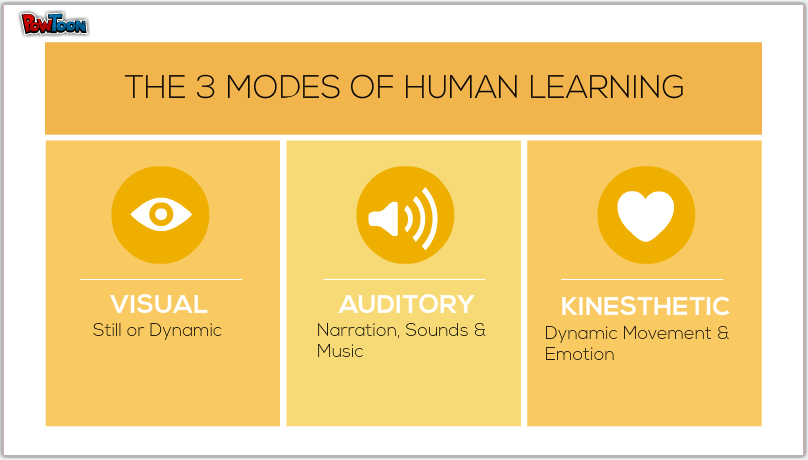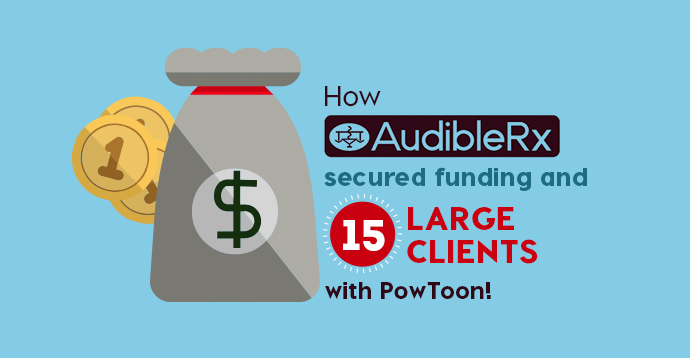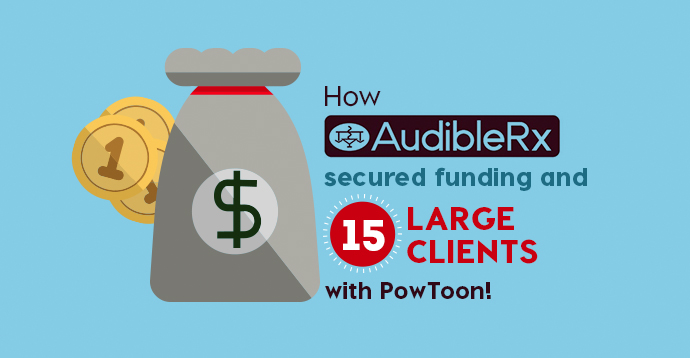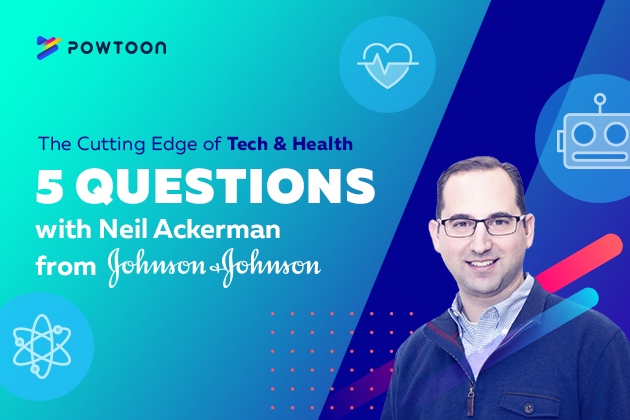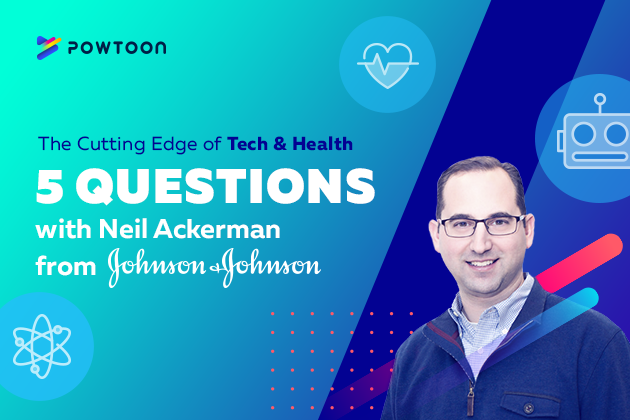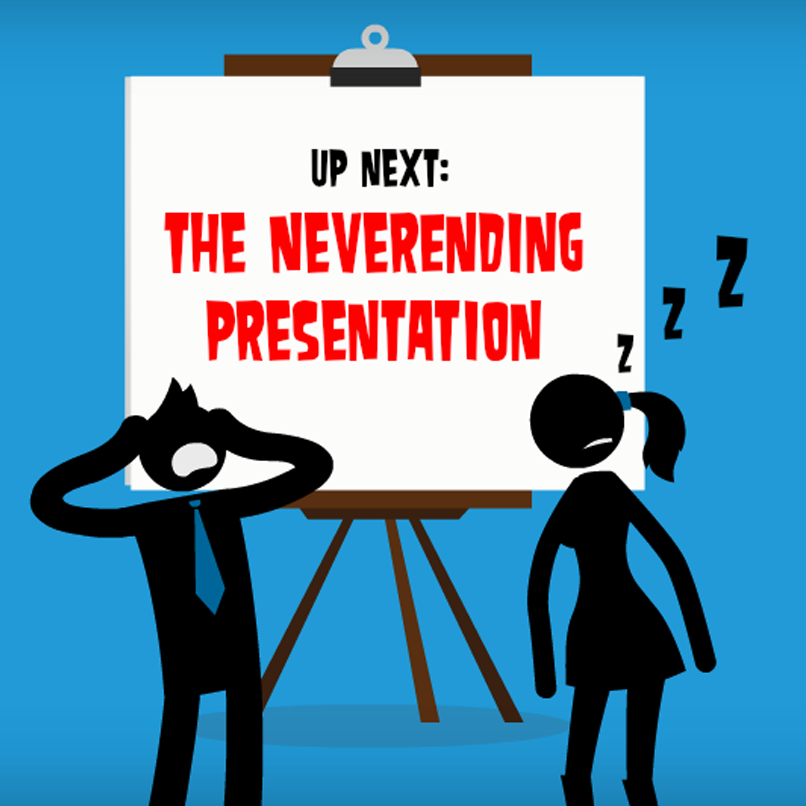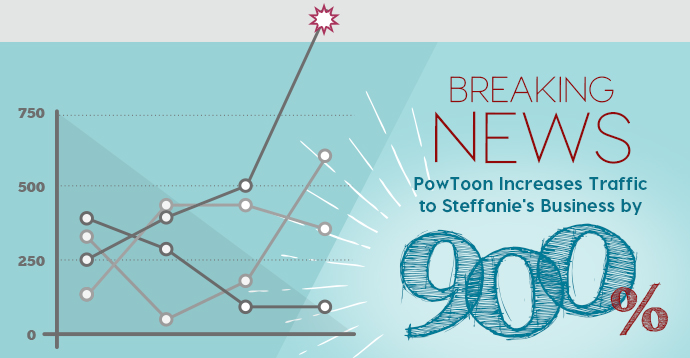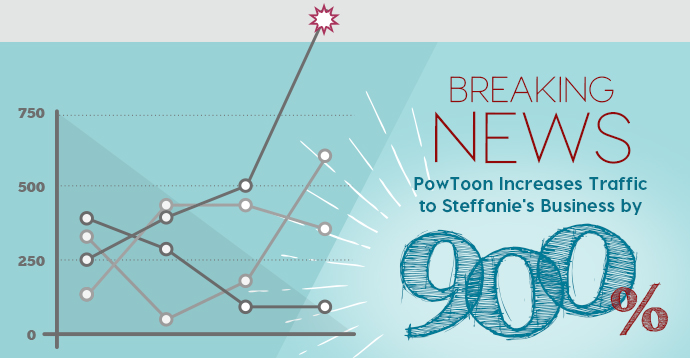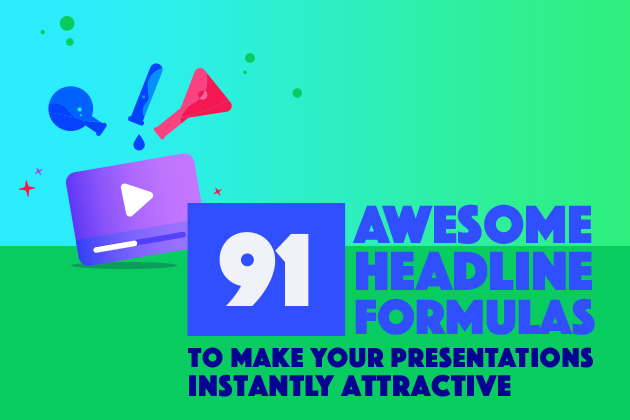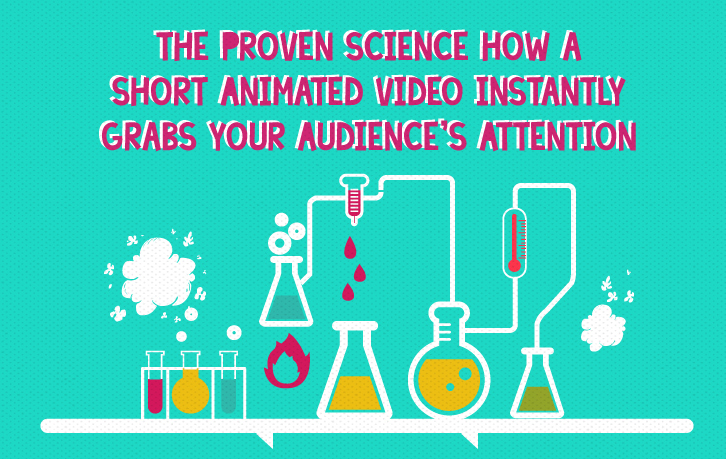
The Proven Science of How a Short Animated Video Instantly Grabs Your Audience’s Attention
Do you know the real problem your audience struggles with…every second of their day?
Whether you’re a Fortune 1000 executive or a small business owner, your biggest challenge at work is not at all what you think.
If you’re a corporate executive, you probably think your main challenge is meeting deadlines with the huge amount of workload you’re piled with. And if you’re a small business owner, you’re thinking your biggest challenge is getting new clients and making sales.
While the above is true – it’s only true of the symptom and not the core problem. Read that again. Because the clearer you get on this fundamental issue the easier your work will start to become.
Once you internalize how this issue is at the core of your work today, you’ll start to see some exciting effects. Your colleagues will start to refer to you as “Creative Genius,” and more people will start to respond to your emails and invitations.
I know this because that’s EXACTLY what you’ve told me! During a private training I recently gave for a 14 person team in a Fortune 1000 company, one person told me how they had a 300% increase in attendance to one of their events – just by using what you’re about to learn in today’s post.
A business owner commented in a recent webinar how using this strategy earned them the title of “Creative Genius” by their partners and clients. How awesome is that? How great would it feel to use the below strategy to garner the respect of colleagues and clients being crowned “Creative Genius”?
So let’s get to work….
The big problem in your work today is getting your colleagues’ or clients’ attention. Period.
Everything that you create and communicate (i.e your ‘work’) simply boils down to ensuring your colleagues, clients and audience pays attention to you. If they don’t – your work becomes the equivalent of a spam box: another distraction in their day.
If you’ve ever seen your audience staring at their phones during your presentation – you know exactly what I’m talking about. I mean, what’s more frustrating than putting in hours into your presentation – only to have your audience respond like apathetic teenagers? #NotAwesome
Did you know the Associated Press reported that Attention Spans are shrinking, literally?
You see, this ‘attention problem’ is the most fundamental challenge you face today in your work. Just the other day, an executive of one of the most famous investment banks in the world told me, “Anything you can do to grab a banker’s attention before they run out the door is invaluable. I need to use Powtoon to entertain them, so they’d actually pay attention to the communications we send them!”
The Definition of Attention
If you want to grab attention, you first need to understand what attention means, on a neuroscientific level. Otherwise, we’re just throwing darts. Thankfully, there’s a plethora of exciting research that scientifically illustrates exactly how attention works in our brains.
First, we need a working definition.
According to the Oxford Journal of Medicine, the best working definition of Attention is by the famed philosopher William James in his book, “The Principles of Psychology” in 1890:
“It [attention] is the taking possession by the mind, in clear and vivid form, of one out of what seem several simultaneously possible objects or trains of thought. Focalization, concentration, of consciousness are of its essence. It implies withdrawal from some things in order to deal effectively with others, and is a condition which has a real opposite in the confused, dazed, scatterbrained state.”
In other words….
Attention = rising above the noise to solely focus on one given thing. To clearly ‘take possession of your mind’ out of the busy-ness and ‘trains of thought’ without which you would simply be distracted, dazed and confused.
This definition gives us a great start. Now that we know that attention means to ‘take possession’ of your (audiences’) mind, the next logical question is…HOW?
How do you ‘rise above the noise’ that’s distracting your team, colleagues, clients and prospects…every minute of the day? Before I give you the 3 part-blueprint, let’s dig a little deeper. Because you’re about to discover the 2 neurons you need to understand to ‘take possession’ of your audience’s mind (i.e, grab their attention).
Leverage These 2 Neurons To Take Possession of Your Audience’s Mind
Sandra Kuhlman at Carnegie Mellon University published a study recently, revealing how our brains absorb information. Her research revealed the two types of neurons in our brain that are responsible for learning:
1. Inhibitory neurons – are the neurons that prevents new information from being absorbed
2. Excitatory neurons – are the neurons that help you absorb and generate new information
These neurons are responsible for processing sensory information and overall “cognitive functioning”.
Based on how these two neurons operate in adult brains, Kuhlman and her team found something particularly fascinating in children’s brains. Children, they found, have their inhibitory cells turned off! This means children’s brains are wired to be in learning mode all the time.
“When you’re young, you haven’t experienced much, so your brain needs to be a sponge that soaks up all types of information,” Kuhlman observed. “It seems that “the brain turns off the inhibitory cells in order to allow this to happen.”
And the opposite is true for the adult brain, Kuhlman found.
Adults have so many responsibilities and activities that it would be impossible to function optimally while being in “sponge” mode. As a response to this need, the adult brain turns the inhibitory neurons ON in order to prevent and impede new information from being absorbed. Meaning, as we become adults, our brains move from being an “open sponge” to becoming an “aggressive filter” – keeping out unnecessary information.
Unlike children, who are always in learning mode, adults must intentionally activate their brains in order to enter learning mode.
Unless…
Unless you understand how to activate adult brains so that their excitatory neurons are firing. But How? HOW do you bridge the gap between your audience who’s thinking about a million other things – and YOUR message to them?
How To Bridge The Gap Between You & Your Audience…With This 1 Crucial Step!
In order to bridge the gap between you and your audience – so that they pay attention to everything you say – you need to activate their emotions. Emotions are the secret key to unlock your audience’s excitatory neurons to activate their brains so they’re in learning mode.
Read that again, because it’s crucial to your work today. Because most executives are sending out pieces of communication in their company with HOPE, instead of STRATEGY. From reports to guidelines to updates to training – if your communication isn’t strategically sent to (scientifically) grab their attention – you might as well call in sick.
When you touch emotion you hold attention
That’s a “writer-downer”. The more you master the art and science of touching the emotion of your audience, the more you can hold their attention.
Steve Jobs’ iPhone introduction in 2007 is a brilliant example of this. When Steve Jobs got in front of his adoring audience he began his presentation by first touching emotion:
“This is a day I’ve been looking forward to for two and a half years. Every once in a while a revolutionary product comes along that changes everything.”
Those are words that touch the heart – not the brain. Does the brain need the logistical details that he’s been anticipating this moment for two and a half years? Does the brain need to know the definition of a “revolution” or how to qualify, “changes everything”?
No, because Steve Jobs’ mastery at holding people’s attention was not achieved by speaking to just their brains. It’s his mastery of touching their emotions (which I’ll breakdown for you in a moment how exactly he did this). That is why you could hear a pin drop in the room of thousands. If you want to grab and hold attention – touch emotion.
The Only 4 Emotions You Can Touch
As a resource for you, here are 4 core-emotions to strategically trigger with all of your communications.
It’s important to note, that without defining these 4 emotions and knowing how to trigger them, no matter how professional your content may seem, it will always fall short. Because adults today simply cannot possibly pay attention to a communication piece that does not trigger an emotion. By leveraging the emotions of your colleagues and clients in a piece of communication, you are now “possessing their mind”, to quote James.
New research from the Institute of Neuroscience and Psychology at the University of Glasgow, shows that humans have only 4 core emotions:
-
Happy
-
Sad
-
Afraid/Surprised
-
Angry/Disgusted
Of course there are more defined and specific emotions within each of these 4 ‘core categories.’ So, for example, “Surprise” has within it excitement, anticipation, shock, secret, mystery, etc. “Happy” has within it love, contribution, kindness, compassion, etc.
Let’s revisit Steve Jobs’ presentation, keeping the 4 Core Emotions in mind. Which of the 4 core emotions did Jobs trigger during the 2007 iPhone launch?
“This is a day I’ve been looking forward to for two and a half years. Every once in awhile a revolutionary product comes along that changes everything.”
When Steve Jobs said, “I’ve been looking forward to…” – that activates two core emotions. “Happy” because it means there is something new and valuable coming, which makes us feel happy. “Surprised” because it’s rooted in excitement and anticipation.
If he chose to not activate his audience’s emotion and instead merely explain what new product is being released on (like every other ‘ignored executive’ on planet earth) he would have said this:
“We completed the manufacturing of a new product.”
[Crickets]
Think about it. All the iPhone presentation did was simply release a new product. And, if Steve Jobs was like everyone else, he could have merely stated the straightforward information. Which of course is comical how little interest that would generate. Especially in comparison to how revered his presentations are and how historic they’ve become.
Because no one cares about a new product. It’s not the ‘product’ that gets people excited – it’s the message around the product. All the proof you need is the difference between Dell and Apple.
When Dell releases a new product, you don’t see their customers waiting all night outside in the cold like you do with Apple products.
Can you see how this one sentence instantly grabbed his audience’s attention? Jobs’ words activated his audience’s excitatory neurons so they’d be open, eager and excited to learn from him. Without leveraging the emotion within those words – the audience would have responded to corporate messaging the way most people do – by ignoring it.
The Only 3 Ways Your Audience Can Learn From You
Now that you understand how to trigger the emotions of your audience in order to hold their attention, it’s time to learn the 3 specific ways your audience learns.
Until now, you’ve learned that you must activate your audience’s excitatory neurons in their brains. And in order to do so, you must trigger their emotions. Once triggered, your audience will enter “learning mode.”
However, if you activate an adult’s brain into learning mode, you run into another set of considerations: You have to understand which mode they learn best in. Different adults learn best in different ways.
Neil Fleming, a professor from Lincoln University in New Zealand, observed over 9,000 classroom lessons. Through his extensive research, Fleming discovered that adults learn in three different modes:
The 3 Modes of Human Learning (VAK)
-
VISUAL (still or active visual)
-
AUDIO (narration or music sound effects)
-
KINESTHETIC (feel)
Some learn best by ‘seeing‘ it (like a video presentation i.e. it has visuals). Others learn best by ‘hearing‘ it (like a speaker explaining it) and others learn best by ‘feeling’ or using it (interactive and experiential).
Fleming hosts workshops around the world where he explains this theory so that participants can optimize university lesson plans, business presentations, website user-experiences, etc. In his workshops, Fleming gives a questionaire that, when answered, shows which mode an audience best learns.
Here’s an example:
Did you notice how answering the question reveals the best mode for capturing an audience’s optimal engagement?
The point of this questionnaire is to show you that your audience has different modes of learning. Some prefer to listen while others prefer to watch and others prefer to read.
Here are 3 examples of each mode of learning in action through various communication and marketing channels (yes, even cereal boxes). As you go through these examples, think just how powerful it would be to have a platform that leverages all three learning modes simultaneously.
1. VISUAL
To show the power of visual learning, look at Kellogg’s. To draw their audience in, they don’t merely show the words (like this image):
They VISUALLY grab you (with this image):
In fact, there are 5 metaphors playing out all at once to make you think again before passing up this adventure of an eating experience – all through the power of Visual Learning.
In a single image, you’re experiencing these 5 metaphors on the visual level alone (grabbing your attention so powerfully they compel you to buy it).
1. The Jungle Theme (blue) – makes you feel like these’Loops of Froot’ are treasure from a Pacific paradise.
2. Meet Toucan, Your New Best Friend (yellow) – the happy bird from paradise with eyes wide open and seemingly having the time of his life, makes you feel like an amazing adventure awaits you. In the jungle, fresh fruit, flying from a tree and happy as can be. The animated character plays a deeply central role in making this cereal experience personal, exciting and adventurous. When was the last time you had a bowl of fruit from paradise for breakfast? The happy bird is delivering all that of goodness to you in this fun-box of Froot Loops.
3. At Home With A Friendly Exotic Bird (white) – a dramatized animated character, Toucan Sam, invites you to his tree-house in the jungle wild, where you’ll be eating the Froot. Home sweet home, literally!
4. Lively Cereal (green) – the cereal is jumping out of the bowl. The milk looks like it’s coming from a milk-waterfall – splish-splash. This, of course, is not by accident. The intention is to create an image where your brain says, “Wow, that looks like fun!”
5. ‘Natural’ Fruit Flavors (orange) – This is written on a wooden, fruit-decorated sign like the ones at national parks. If it was in black and white or just words, it wouldn’t be a metaphor. The visual of the wooden sign reinforces the overall message that this is “natural”.
Without saying or writing anything – the cereal box itself uses visuals to function as its own full sales message.
2. AUDIO
Remember the opening scene in Star Wars?
Now imagine reading the intro of “In a galaxy far, far away…” WITHOUT the music and just scrolling text. Exactly – who cares. (watch this on MUTE and see how long you can sit through it:)
In fact, in an interview I once saw when George Lucas showed the first screenings of Star Wars to friends, they weren’t impressed. It wasn’t until they saw the movie with John Williams’ musical score that the movie became something magical and ultra-powerful.
It’s because audio affects the way we absorb information. A study by a team of Montreal Neuroscientists revealed how our bodies and brains respond to music.
They found for example that when we listen to music we enjoy, our body emits all the symptoms of being emotionally aroused. The pupils in our eyes dilate, our pulse and blood pressure rise and the cerebellum (the part in our brain associated with movement in the body), becomes active. In other words, audio can activate our brain and our entire body.
Which is why merely reading “In a galaxy far, far away” will do very little, if nothing at all, to our excitatory neurons. But by activating our auditory sense of learning through music – our entire nervous system becomes activated.
3. KINESTHETIC
Which of the following 2 examples do you think would be more effective in teaching a first grader math, the teacher saying:
-
How much is 7 – 4?
-
Your mother has 7 of your favorite candies that she bought for you and is super excited to give them to you because she loves you so much – right, 7 candies just for you. But, you have 4 friends over playing at your home and you know how important it is to share and you want to be nice and give 4 of your 7 candies to your friends. Let’s say you give 4 of the 7 candies your mom gives you to your friends. How many candies do you have left for yourself?
In the second example, we taught the concept by associating it with real life ‘emotion-filled’ examples. The second example is way more effective because the dull information was turned into a Kinesthetic experience.
This is the 3rd way we learn: Kinesthetically, or by ‘feeling‘. In a live setting this can be done through actual touch or physical movement. In a video or presentation you do this by anchoring your content with emotion.
Take the title of this Blog Post. Which one is more powerful to you:
-
Information Regarding Neuroscience & Animated Videos
-
The Proven Science How a Short Animated Video Instantly Grabs Your Audience’s Attention
Would you ever choose to read something called “Information Regarding [Fill in the blank]”? No chance! Because it doesn’t grab your emotions. It doesn’t trigger a deeper problem that you need solved. The reason you’re reading this now is because of the third way we all learn: Kinesthetic.
When information is presented to you in a way that generates emotion, feeling and deeper needs – it causes you to pay close attention.
The reason why “Information Regarding [Fill in the blank]” would NEVER cause anyone to read it is because it’s purely ‘information’ without solving a deeper need and on going problem.
Let’s breakdown the title to reveal how many emotions it’s triggering:
-
“The Proven Science” – meaning, this is proven, so you trust it
-
“How a Short Animated Video” – shows you it’s achievable (as opposed to a “Full Length Pixar Film”, which is not achievable)
-
“Instantly Grabs Your Audience’s Attention” – the ability to achieve an important goal (grabbing attention) in a short amount of time triggers a whole range of emotions from power, security, freedom, growth, success, happiness, etc – all at once.
By leveraging the 3rd way we learn, the title of this blog post turns ‘information’ into something you feel.
In fact, according to Andrew Newberg, M.D. and Mark Robert Waldman in their book “Words Can Change Your Brain”, they explain how: “a single word has the power to influence the expression of genes that regulate physical and emotional stress.”
When we ‘feel’ the content, we absorb it powerfully and want more of it.
IMPORTANT: Quick Re-Cap
Before we get to the finale – let’s do a quick recap:
-
It’s difficult to grab your audience’s attention because their excitatory neurons are turned off. (Your audience behave like information filters, not information sponges)
-
The way to turn excitatory neurons on is by triggering emotion in 4 core ways.
-
Once your audience’s brains are open to learning, there are 3 ways you must present the information.
Now let me ask you a fascinating question:
What if there was a way where you could achieve all of these elements simultaneously? Where with one fell swoop you could grab your audience’s attention, trigger their emotion and activate all three learning modes at once?
That, my friend, is the neuroscientific power of animation.
Animation Instantly Activates All 3 Learning Modes of an Adults’ Brain… Simultaneously
Animation activates the cognitive adult brain through the use of dynamic visuals, audio and by creating an emotional experience. Animation activates all 3 areas of the learning brain at the same time. Here’s how:
-
Your brain associates ‘animation‘ with positive emotions (like joy, feeling young, freedom, entertainment, fun, excitement, humor, etc.)
-
Animation has vivid visuals to activate your ‘visual‘ mode of learning
-
Animation uses soundtracks and music to activate your ‘audio‘ mode of learning
-
So by incorporating all 3 mediums of visual, auditory, and kinesthetic modes of learning simultaneously, your brain’s excitatory neurons are fully activated.
There’s simply no other medium that does this because animation is the perfect cognitive experience (feel free to Tweet that).
PROOF
Identify the difference between these 3 images, and decide which is the most effective for grabbing attention:
The 3rd animated graphic simultaneously conjures a variety of associations in your brain:
-
Happiness
-
Personal
-
Summer
-
Friendliness
-
Enthusiasm
-
Brightness
-
Fun
…all of these emotional responses in just one image.
This is why many of the Fortune 500 companies are obsessed with using animated videos for their marketing, internal communications, knowledge management and information management.
Short animated videos functions as a way to fully engage any company’s customers and colleagues – better than any other medium by activating all 3 learning modes…simultaneously.
Our brains have been wired since childhood to respond positively and instantly to animation.
After all, the most successful companies in the world have been using animation for years…
…and we didn’t even notice:
Nike, Coca-Cola, M&M, Nestle & McDonalds:
Notice how these companies strategically use ‘Animated Characters’:
– The Coca-Cola Monster
– The Coca-Cola Polar Bear
– The McDonlads Farm Animals
– The Nestle Granny
– The Anthropomorphized M&M
– The Nike Athletes
The most successful companies in the world go out of their way to use animated videos & characters for one simple reason:
Animation Captivates.
And each of the companies above use Powtoon! Virtually every Fortune 500 company leverages Powtoon to turn ‘ignored internal communication’ into pieces of content their colleagues LOVE.
One recent executive told me during a phone call, “My boss told me this (i.e their Powtoon on their new software update) was the most creative and useful initiative our team has created…all quarter!”
At this point, you fully understand why the Fortune 500 use animated videos so consistently. It triggers emotion to open up the excitatory neurons. By doing so, their audience’s brain absorbs the marketing video in all 3 modes of learning: audio, visual and kinesthetic.
Here are a few public Powtoons that companies we love have made:
Oracle’s “We’re Hiring” Powtoon
Virgin’s “Year In Review” Powtoon
Entrepreneur Magazine’s “Time Management Tips” Powtoon
We’re living in the ‘age of constant distraction’ where the #1 resource has now become ATTENTION.
Which is why Powtoon is now used by every Ivy League University, every major Hollywood Film Studio and millions (and millions) of business owners all over the world….every day. Because Powtoon is the proven way to instantly grab your audience’s attention.
And guess what? With our ‘Simple Mode’ – you can now create a gorgeous and professional Powtoon in under 20 minutes! Just choose a template, choose your text and image – publish and you’re done. WOOT!
Let me finish with a very exciting ‘TOP SECRET MISSION’ we’re working on.
This’Top Secret Mission’ is for corporate professionals – and your help would mean a TON to us.
This project is all about creating a Powtoon template that is completely tailor made for you and your specific business case. If all goes as planned, it means you’ll never see a co-worker ignoring your emails or staring at their phone during your presentations. If it really does work – you and I will turn corporate internal communications and knowledge management into content co-workers simply can’t get enough of.
Here’s how you can help our common cause:
If you work in: HR, Internal Communications, Knowledge and Information Management, Learning and Development, Operations, Marketing, Sales or a role which requires you to skillfully communicate with your team or your bosses, please let us know of a template you would LOVE to have for YOUR day at work. Then – we’ll evaluate the top choices and make them for you!
Thank you, it means a lot to all of us at Powtoon 🙂
Now I would LOVE to hear from you! Leave a comment below right now and I’ll try to respond ASAP:
What’s the 1 ‘take-away’ you’re going to USE to grab YOUR audience’s attention at work…this week?
you’re awesome,
Ari
Ari Sherbill
Latest posts by Ari Sherbill (see all)
- How to be like Rod: Increase your sales by 75% in no time - January 5, 2017
- 5 New Graphic Styles - August 14, 2016
- How to Get the Best HIRES (Without Increasing Your Budget) - August 8, 2016
- Now You Can Customize Your Brand Colors in Powtoon – Customize Your Brand Colors - July 31, 2016






